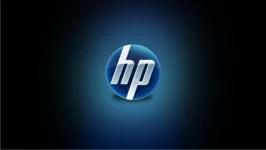Over the last two decades, HP, when from a company known for treating its employees very well to one known for employing CEOs that shouldn’t have been CEOs, and then back to a firm that treats employees and customers very well. HP’s last two CEOs have shown a level of care for employees and customers that restores a great deal of the empathy and execution that once, and now again, defines the company. It is fascinating that after a string of outside CEO hires, the firm is currently being led by Enrique Lores, who started with HP as an Intern 30 years ago. It is fascinating that HP’s last external CEO, Dion Weisler, finally put HP back on the path it once was both from the standpoint of focus and proper succession.
This week is the HP Innovation Summit, and I attended the event virtually. Like many, I have no idea when, or even if, I’ll start traveling again, so these virtual events are where I’m spending my time. HP didn’t disappoint with their event addressing broad issues like security, sustainability, diversity & inclusion, and some of HP’s more interesting technologies like Microfluidics, which cause the firm to stand out from its peers. Currently, HP is effectively a lighthouse for efforts surrounding diversity, inclusion, and environmental impact.
Let’s explore some of the takeaways from the event (mostly Enrique’s keynote) this week.
Pandemic Driven Industry And HP Changes
HP has a broad global footprint covering personal technology like PCs and desktop printers, manufacturing technology like 3D printers, industrial-grade printing, and medical technology tied to Microfluidics. That gives them a relatively unique view of the world, allowing them to find some interesting conclusions.
What they have seen is a broad geopolitical change surrounding how and where goods are distributed and sold. In general, not only has the way we buy changed (shifting sharply to on-line sources), but we’ve even shifted sharply from buying a product to buying a service instead. These trends were already present before the Pandemic, but the Pandemic significantly accelerated these changes.
People’s work has also clearly changed and, before the Pandemic, the idea of even a large number of employees working from home seemed ill-advised. With around 95% of HP’s people remote, the company has concluded that this may not change again for most employees. HP is thriving under this work from home model. Like most of the other companies I cover, it has concluded that working from home will likely remain intact for most employees even after a COVID anti-virus reaches critical mass.
Along with their peers, HP discovered that skill changes were necessary for employees working from home and has implemented programs to drive those necessary skills into their employee base. The ability to work from home has broadened the qualified pool of potential employees, particularly those that are diverse, significantly helping to diversify the company.
Another change is realizing that the final assembly for products needs to be closer to the people who buy them. This localization reduces transportation costs for the final products and increases the ability to create products more granularly. But HP’s goal is to eventually build products customized for every individual, something their work with 3D printing could significantly accelerate.
One of HP’s efforts was little known in Microfluidics, which focuses on delivering minute amounts of fluid at manufacturing speeds. Microfluidics was focused on testing for potential COVID-19 remedies, and it has had a material impact in speeding viable remedies to market by cutting down significantly the time needed for testing. This speed increase is because HP’s Medical Grade microfluidics solution enables testing at a far higher volume than more manual methods.
Finally, HP found that both internally and externally, the security exposure for employees and executives was significantly increased during the Pandemic. HP has been aggressively looking for ways to mitigate these increasing threats.
Wrapping Up:
The world has changed significantly due to the Pandemic, and HP has changed right along with it. Recognizing that Trust would likely be a key differentiator, HP put that concept into their brand’s heart. This Trust validated by HP’s efforts on community impact, mitigating social inequality, creating a circular economy (for sustainability), and, of course, diversity, inclusion, and equity.
The firm realized that diversity drives focused innovation, concluding that a diverse workforce is necessary to deal with a diverse world population’s diverse needs. But what Enrique left us with is that he and his team realize that the future won’t be about what HP has done but what it will do in the future. And HP plans to continue to lead in its diversity, inclusion, and equity efforts and define itself through the best treatment for employees and customers that they are capable of delivering. And they are capable of delivering a lot.








